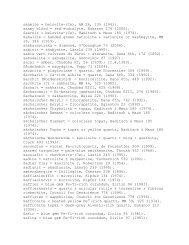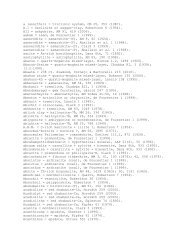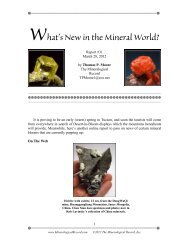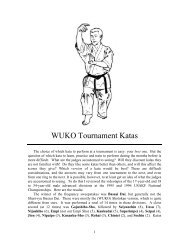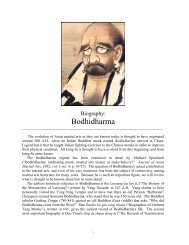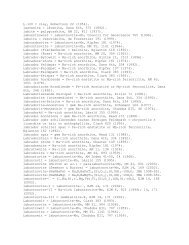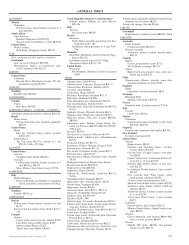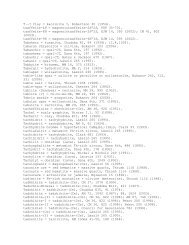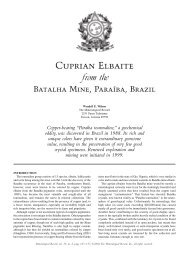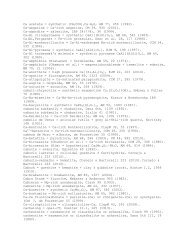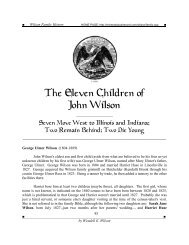The Kiai
The Kiai
The Kiai
You also want an ePaper? Increase the reach of your titles
YUMPU automatically turns print PDFs into web optimized ePapers that Google loves.
can have ten times that many. Japanese styles of swordsmanship, however, often require<br />
a muted kiai on virtually every cut.<br />
<strong>The</strong> term kiai is a contracted nominal form of the phrase ki ga au (literally, to<br />
harmonize), which in the martial arts means to channel your own energy in harmony with<br />
that of your opponent so as to increase the destructive force of your technique. A related<br />
phrase is ki o awaseru, to blend or harmonize with another’s intent or action. This is a<br />
high-level concept in fighting, to “become one” with your opponent rather than clashing<br />
ineffectually, and it is interesting to find it embodied in a word which seemingly refers to<br />
a yell. This accounts for the common but perplexing translation of kiai as “spirit<br />
meeting.” In tactical terms it means that the stronger mind fuses with the weaker in order<br />
to control it. For the samurai this was an aspect of shinki-jutsu, the general art of uniting<br />
opposing minds under the control of one. In an even broader interpretation, kiai is<br />
sometimes regarded as the manifestation of the Active Principle (Aiki or God) of the<br />
Universe.<br />
In the sense of its harmonizing effect, kiai also bridges the mind and body of the<br />
practitioner himself to achieve a perfect meeting and coordinating of the timing and focus<br />
of a technique at the moment of execution.<br />
<strong>Kiai</strong>-Jutsu<br />
<strong>The</strong> refining of kiai ability as an art and a weapon in itself was once known as kiaijutsu.<br />
Legend has it that the early masters could stun or even kill an opponent without<br />
touching him. <strong>The</strong> training is said to have required years. In practice today, a good kiai<br />
can indeed stun an opponent (and even an audience) momentarily, so it seems likely that<br />
several years of training in the use of the voice as a weapon would be able to achieve<br />
even more extraordinary results. Unfortunately, kiai-jutsu is essentially a lost art, there<br />
being no surviving masters who can teach the full original training program. But at least<br />
the basic aspects have been preserved as a part of most Oriental martial arts.<br />
<strong>The</strong> kiai is so fundamental to karate training that instructors commonly use it as one<br />
measure of a student’s progress. Donn Draeger, in his 1973 book on Classical Budo,<br />
wrote:<br />
A well-made kiai produces a characteristic sound that makes the ears ring: it<br />
seems to come from a source deep within the trainee, and not merely to be<br />
caused by the vibration of his vocal cords. <strong>The</strong> tonal fidelity of the kiai is<br />
much like the unforgettable, deep-seated rumble of a lion at bay. <strong>The</strong> kiai<br />
indicates the degree of integration of mind and body in the execution of a<br />
technique. It is an unfailing source of information for the master, who thereby<br />
knows the trainee’s level of achievement.<br />
Draeger’s comparison of a good kiai to a lion’s roar is perceptive. To be in the presence<br />
of a real master performing a kata can be quite an experience when he comes to a kiai,<br />
especially if you are sitting in the front row. Something deep in your primitive midbrain<br />
suddenly tells you you’re about to become lunch!<br />
Kuatsu <strong>Kiai</strong><br />
Because kiai liberates mental and physical force rapidly to affect another person in<br />
close proximity, it is also used in some resuscitation techniques (kuatsu). A trained<br />
practitioner can utilize it to revive someone who has been rendered unconscious by<br />
2



